24 Best Festivals in Japan: A Month-by-Month Guide
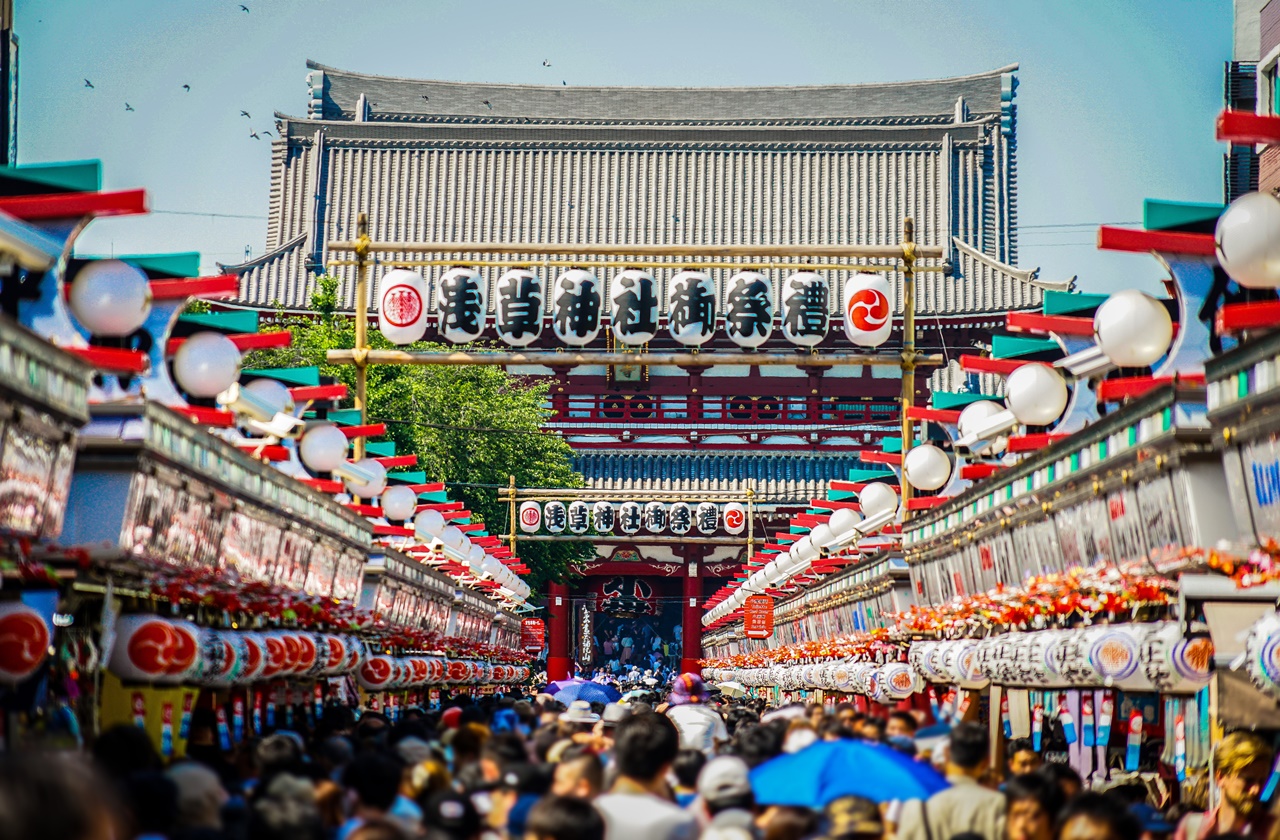
Around the world, festivals are much-anticipated events that center around a unique aspect of religion or culture of the place. These festivals celebrate, honor, or commemorate historical events, people, and changes in the season. Countries also celebrate festivals with carnival games, dancing, and food stalls, like most festivals in Japan. As a tourist, witnessing a country’s festival is like getting a glimpse of their culture and history, an experience worth the thick crowds and even heavy traffic.
Japan, in particular, is a country famous for its festivals steeped in its history and religion. Most of these festivals, locally known as matsuri, are based around shrines, with every shrine celebrating their own festival. Usually, local shrines or temples sponsor and organize a festival. You’ll find people carrying palanquins around the street, accompanied by energetic or graceful music and dances, a trait shared with most festivals in the Philippines.
Because of the great number of festivals in Japan, one can get overwhelmed and end up not knowing which eventl to attend. But worry not! Here’s a comprehensive breakdown of Japanese festivals by month.
How Many Festivals Are Celebrated in Japan?
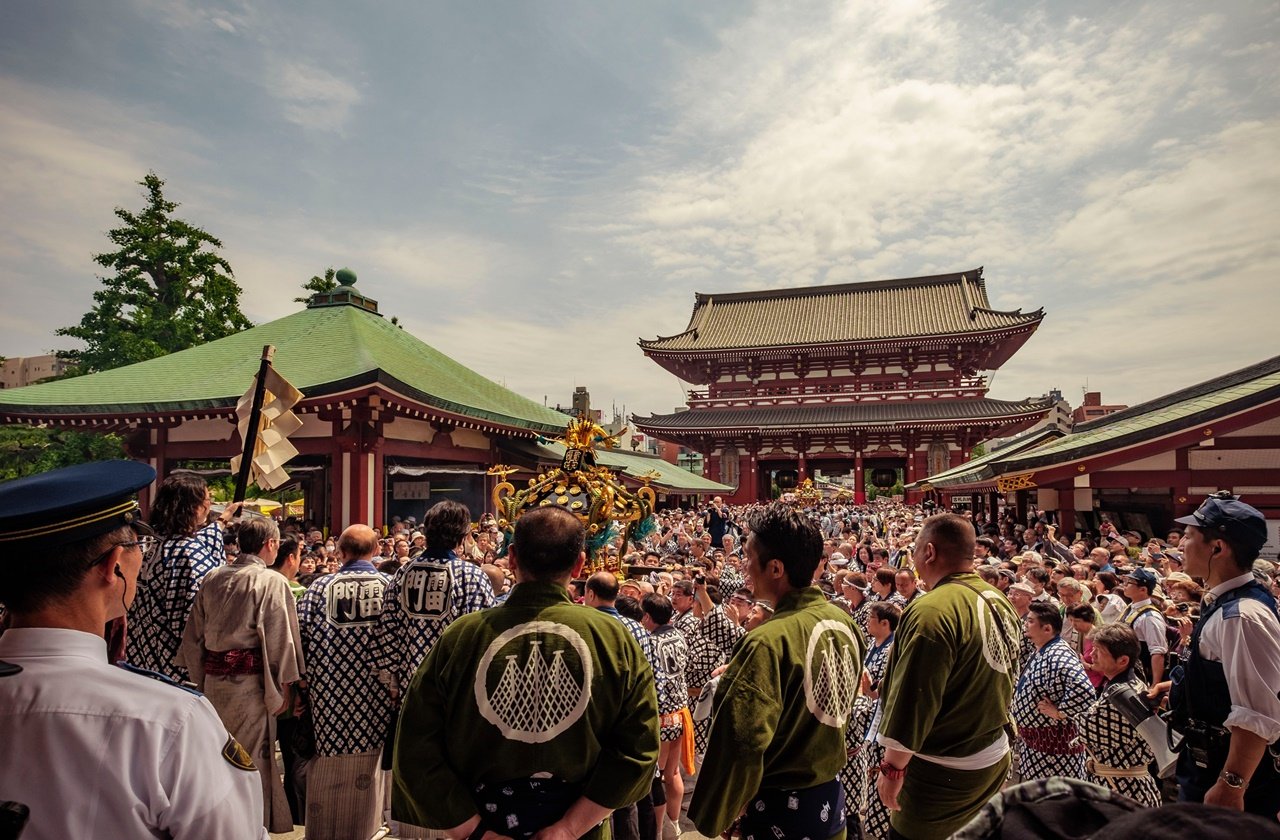
Photo by Julie Fader on Unsplash
One can’t place an exact number on the festivals in Japan since there are thousands of local shrines and temples. The numbers can easily vary from 100,000 to 300,000, all of them unique. And if you ask, “why are there so many festivals in Japan?”, that’s because there are about 80,000 Shinto shrines and more than 77,000 Buddhist shrines in the country, each celebrating their own festival. Add the fact that there are numerous gods and deities worshipped in Japanese culture and you’ll get why there are hundreds of thousands of festivals in Japan.
Festivals in Japan by Month
January
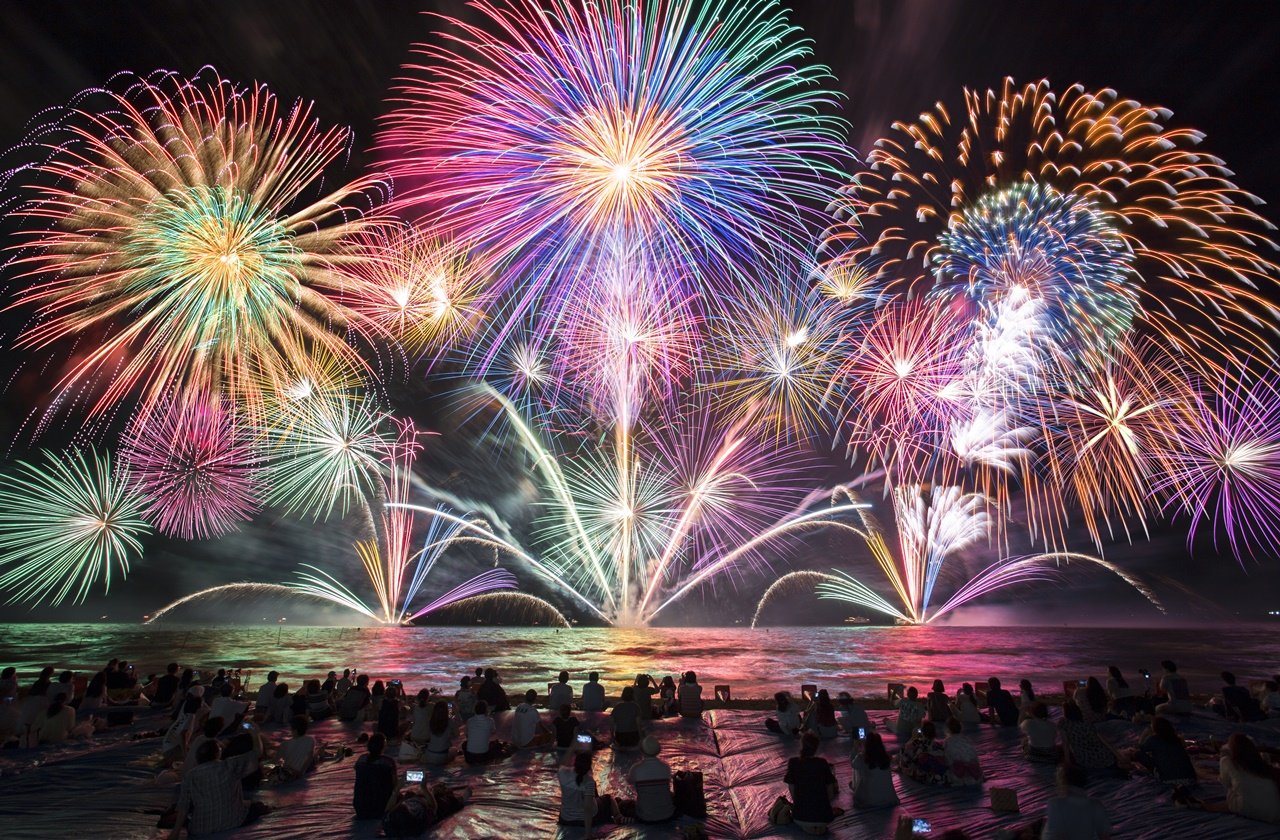
Photo by lastpresent on Adobe Stock
The start of the calendar year brings about several festivals in Japan. In January, you’ll commonly find water and fire festivals, a symbol of purity in Japan. Another common theme of Japanese festivals is the renewal of time.
1. Japanese New Year
Date: January 1
Location: Nationwide
The Japanese New Year, also known as Shōgatsu, is one of the major festivals in the country. While the celebration falls on the first day of January, you’ll find that the festival continues even after January 1. During the Shōgatsu festivities, families prepare special Japanese food and give small envelopes containing money to children. Another popular tradition is the hatsumode, where families visit a temple or shrine to pray for happiness and good health.
2. Coming of Age Day
Date: Second Monday of January
Location: Nationwide
Find young women dressed in stunning kimonos during Japan’s Coming of Age Day (Seijin no Hi). The holiday celebrates those who turned 20 years old during the past year, and are now adults with new responsibilities and privileges. They are now within the legal drinking age in Japan, as well as driving, voting, and gambling age. Local and prefectural offices would hold coming of age ceremonies, taiko drum performances, and more. Afterward, the young women and men are free to celebrate with their families and friends.
February
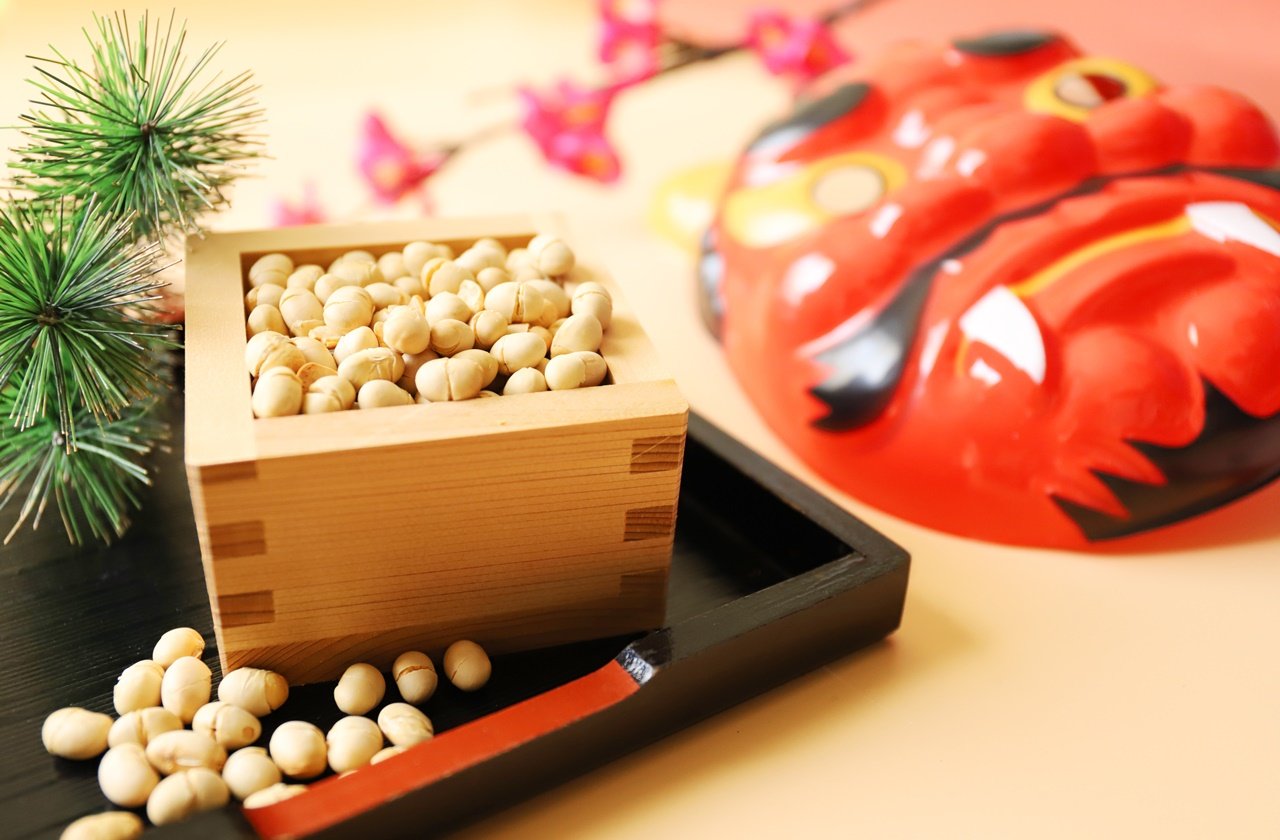
Photo by 尚子 古橋 on Adobe Stock
February is the coldest month in the country and is the perfect time to visit ski resorts and indulge in winter activities. Most festivals in Japan during this month celebrate the beauty of winter and the welcoming of the spring season.
3. Bean-Throwing Festival
Date: February 3
Location: Nationwide
The Bean-Throwing Festival, also known as Setsubun, marks the first day of spring in the traditional lunar calendar. As it is a shift in season, people celebrate this by praying for good fortune while driving away evil spirits. Setsubun is also one of the most popular festivals in Japan because of its unique bean-throwing ritual, locally known as mamemaki. During a mamemaki, people throw roasted soybeans out the front door, or at a member of the family wearing a demon mask. They shout “devil’s out, fortune in!” as they throw the soybeans as a way of purifying their home.
4. Plum Blossom Festival
Date: February 25
Location: Kitano Tenmangū, Kyoto
Welcome the spring days and visit Kyoto’s Plum Blossom Festival. Admire the delicate plum blossoms surrounding the Kitano Tenmangū, a popular shrine in the city. The shrine also hosts an open-air market where geiko (geisha in Kyoto) and maiko (apprentice) serve tea to 3,000 visitors. Since this is a popular festival in Japan, make sure to secure your ticket early. Snap photos of the plum blossom with the shrine as your background. Around the market, find and purchase plum-themed items and other local products.
March
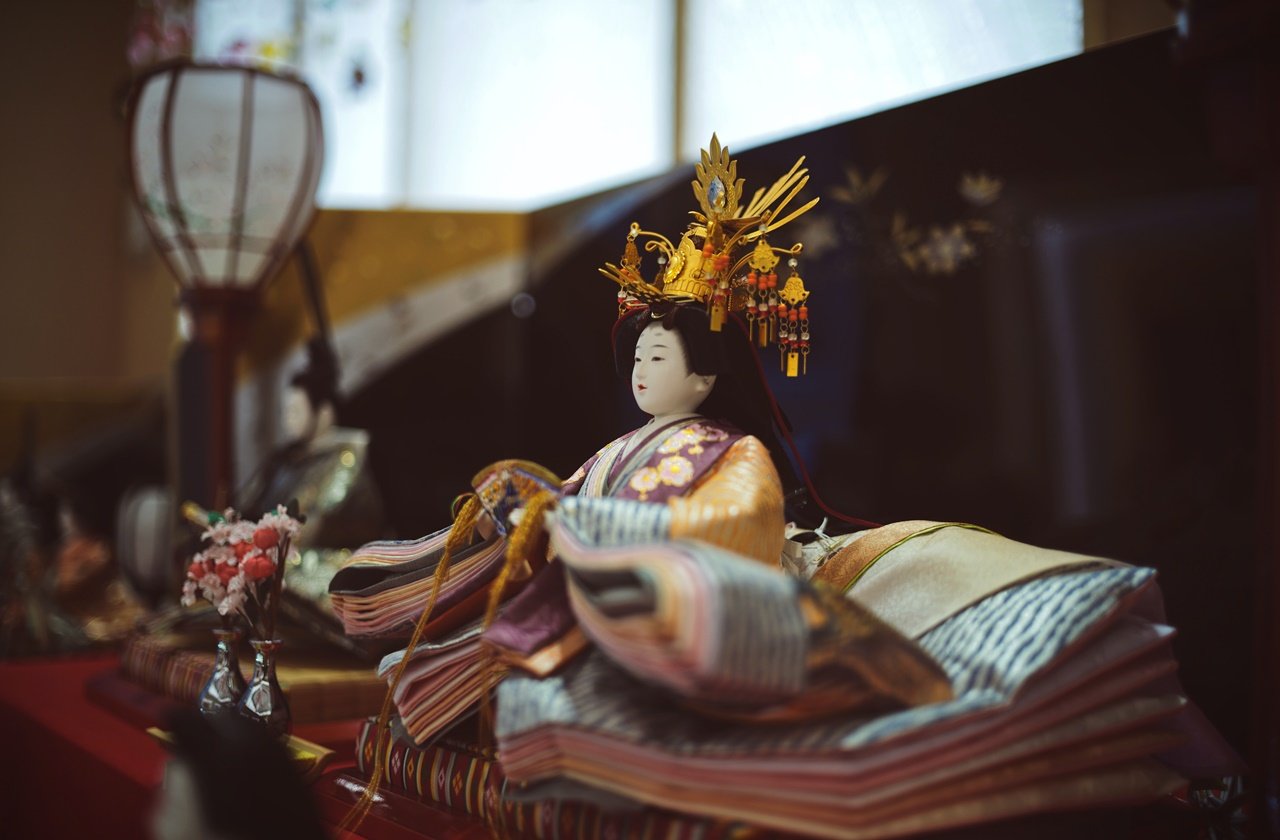
Photo by Will H McMahan on Unsplash
In March, festivals in Japan are centered on themes relating to spring, although there are still a few winter-related festivals within the month. This is also the start of the cherry blossom viewing season, which lasts until May.
5. Doll Festival
Date: March 3
Location: Nationwide
Find lavish oriental dolls on display at houses and public spaces during the Doll Festival, locally known as hina matsuri. The festival also coincides with Girl’s Day, so the festival highlights female children, with families praying for their happiness, good health, and success. During the hina matsuri, families put up displays of ornamental dolls dressed in traditional clothing, said to represent the Emperor, Empress, and other key people of the Heian period. Some cities also have exhibits featuring these dolls displayed at shrines and other spaces.
6. Omizutori
Date: First weeks of March
Location: Todai-ji Temple, Nara
The Omizutori in Nara is one of the festivals in Japan that celebrates the coming of spring, held during the first two weeks of March. It is relatively the oldest festival in the country, dating back to more than 1200 years ago. During the first days of the Omizutori, priests light up giant torches at the Todai-ji Temple where people believe that watching this brings good luck. At the height of the festival, water is drawn from a well and is offered to the public. After the festival and people are cleansed of their sins, they can now look forward and welcome the fresh start brought by spring.
April
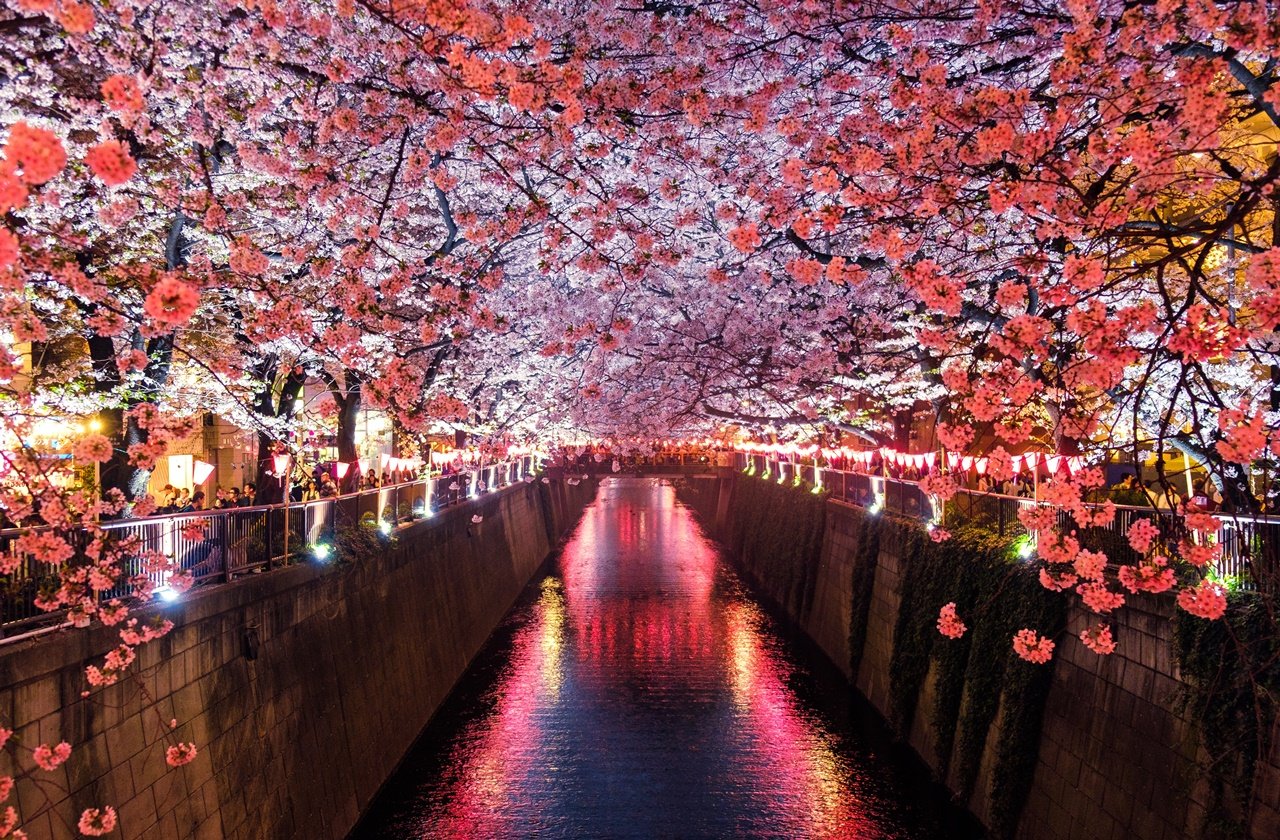
Photo by Sora Sagano on Unsplash
April in Japan marks the height of spring, and you’ll find blooming cherry trees around the city. Warm weather also brings plenty of crowds, with cities like Tokyo and Kyoto filled with tourists and locals wanting to see the cherry blossoms.
7. Cherry Blossom Festival
Date: March to May
Location: Select locations
Japan’s symbolic flower, the cherry blossom or sakura, is in full bloom during the months of March to May. Depending on your destination, there are different days where you can view the ever-so-fickle yet breathtaking trees. At a cherry blossom festival or hanami, locals and tourists bring their picnic mats and head to public parks and spaces where there are sakura trees. They also celebrate by drinking sake and tea, and you’ll commonly find evening parties under the Sakura trees during hanami season.
8. Takayama Spring Festival
Date: April 14 to 15
Location: Takayama, Gifu Prefecture
The Takayama Spring Festival in Gifu is one of the most beautiful festivals in Japan. It is also the first installment of a big festival, with the other half celebrated during the fall season. Feel as if you’ve stepped back in time as you watch the parade featuring elegant floats, called yatai. The traditional yatai also showcase marionettes moving in gestures that are very lifelike. At night, the floats are decorated with lanterns, creating a surreal atmosphere.
May
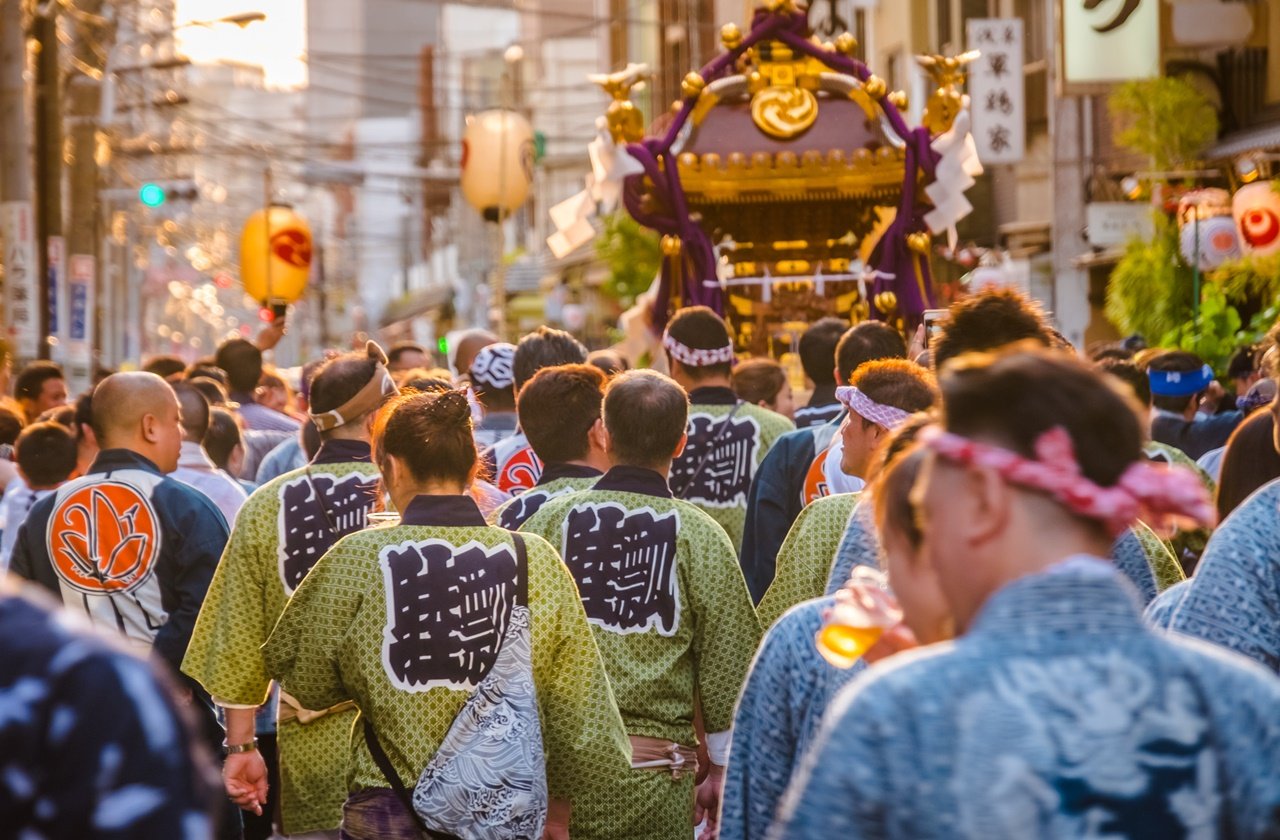
Photo by Yann on Adobe Stock
May is another great time to visit Japan if you want warm and sunny weather. You may also get a chance to catch the last few sakura trees in bloom. However, take note of the potential surge of people visiting during the Golden Week holiday, usually on the last days of April until the early days of May.
9. Hiroshima Flower Festival
Date: Between May 3 to 5
Location: Hiroshima
At the Hiroshima Flower Festival, find the city in bloom, with different stages set up for special events and a huge Flower Tower adorned with colorful flowers. Celebrated during the Golden Week, it is one of the biggest festivals in Hiroshima Prefecture. Learn more about the region as you stroll past exhibits and markets showcasing the best local products and food. Additionally, don’t miss the Yosakoi dance parade, an energetic performance that combines modern music and traditional dance.
10. Kanda Festival
Date: Saturday or Sunday nearest to May 15
Location: Kanda Shrine, Tokyo
Tokyo’s Kanda Matsuri is one of the biggest festivals in Japan, and is one of the three big Shinto festivals of Tokyo along with the Sanja Festival. While the festival initially started out as a celebration of a victory in war, it now honors the gods of the Kanda Shrine. At the festival, see hundreds of mikoshi (portable shrine) paraded around town, accompanied by thousands of citizens and Shinto priests on horseback. If you want to learn more about the festival, head to the Kanda Myojin Museum, open to the public on weekends.
June
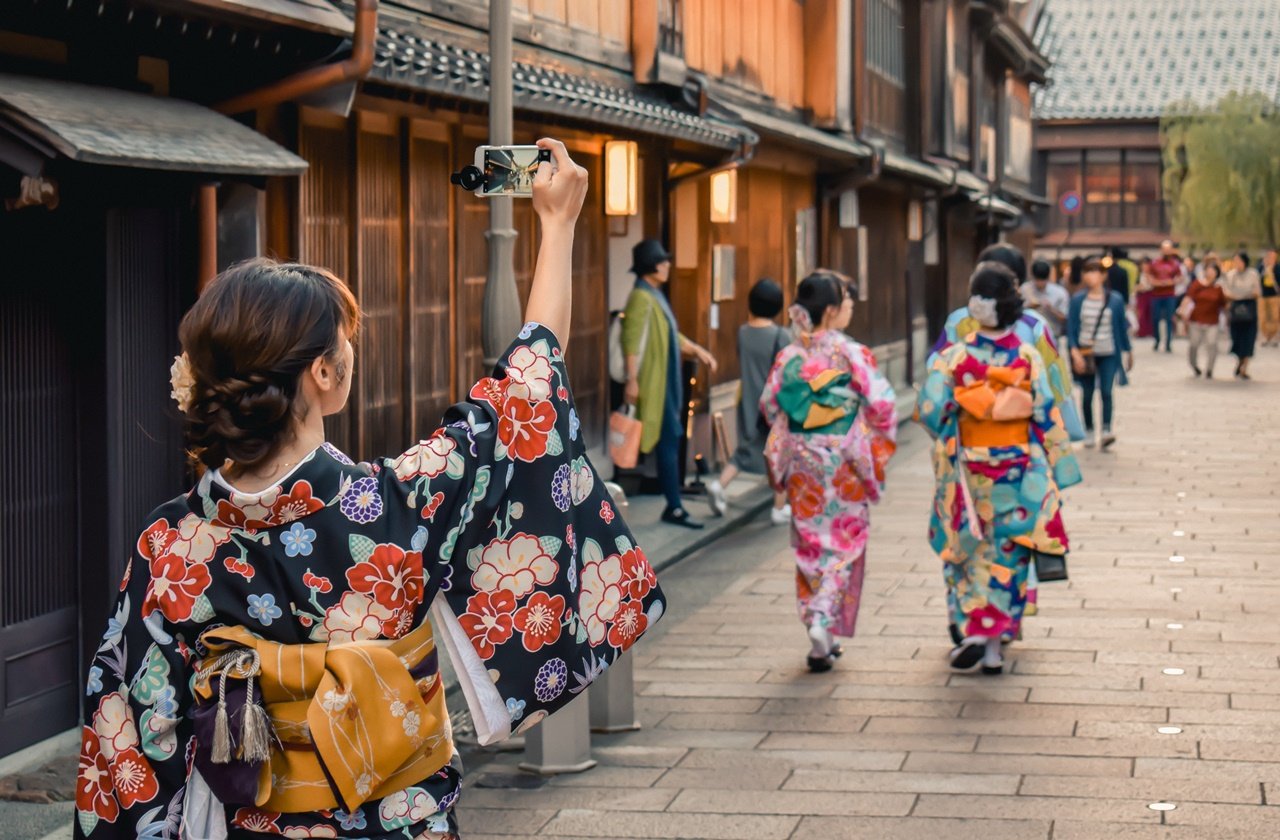
Photo by KaterinaZizlavska on Adobe Stock
The summer months of Japan start in June, so expect people donning their best yukatas! Every region also has its own summer festival celebrations, a great way to appreciate the uniqueness of these areas.
11. Sannō Festival
Date: Early June
Location: Hie Shrine, Tokyo
Along with the Kanda and Sanja Festivals, the Sannō Festival makes up Tokyo’s major Shinto festivals. Held at the Hie Shrine, the 10-day festival features a grand parade of Shinto priests, geishas in period costumes, and mikoshi. Locals carrying huge drums and people on horseback accompany the parade that passes through the streets of Tokyo Station and Ginza. Around the shrine, find Ikebana-style flower arrangements, and seats where you can enjoy Japanese tea. Overall, the Sannō Festival is one of the festivals in Japan that gives you a glimpse of its rich culture and tradition.
12. Tohoku Craft Beer Festival
Date: Dates vary per year
Location: Akita City
Calling all beer connoisseurs! The Tohoku Craft Beer Festival is one of the more contemporary festivals in Japan that celebrates Tohoku’s beer industry. It is also part of a series of sake and craft beer festivals in the country. Find numerous stalls selling tall glasses of beer and tables filled with locals and tourists sharing stories and bonding over their mutual love for the alcoholic beverage. In addition, you’ll get a chance to sample craft beers from brewers from Hokkaido, Tazawa-ko, and other regions.
July
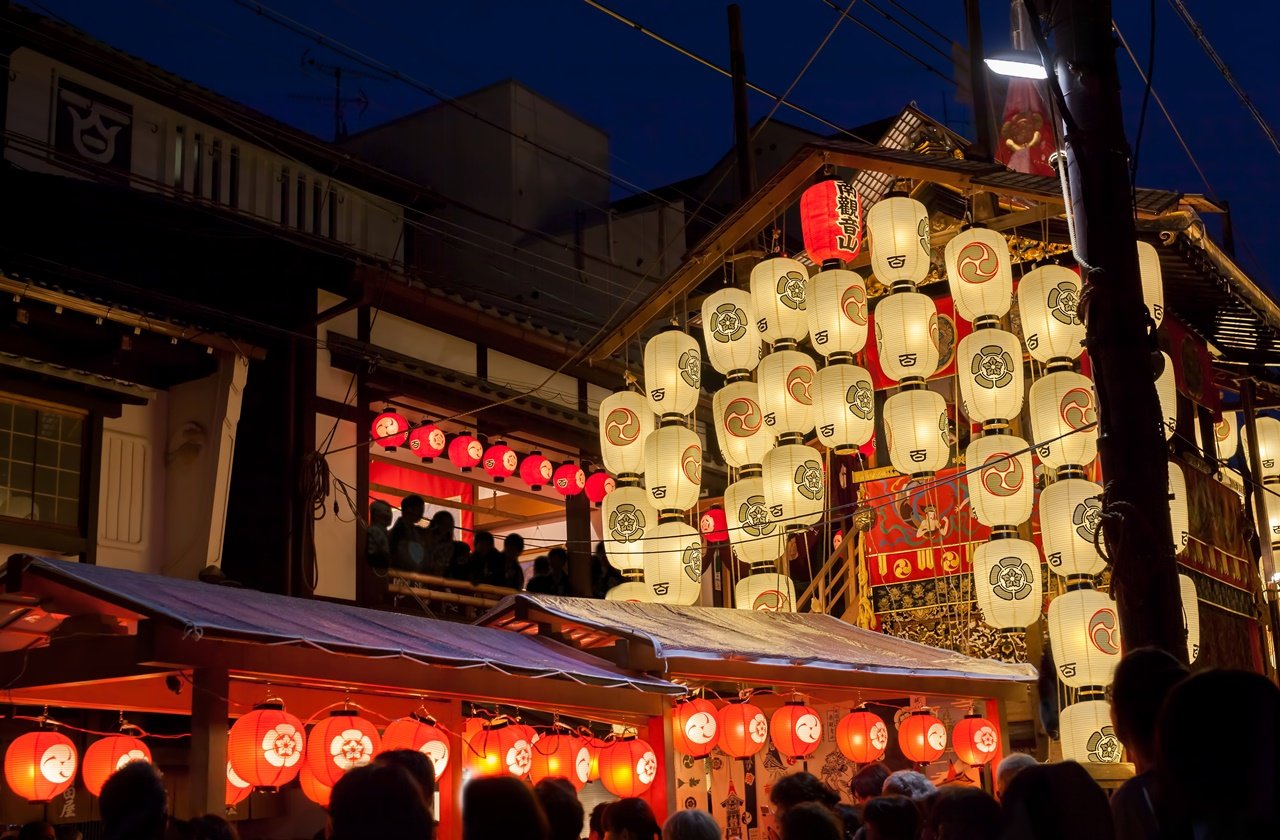
Photo by EvergreenPlanet on Adobe Stock
As the height of the summer season approaches, Japan is busy with different festivals. This is also the perfect time to catch fireworks shows and surround yourself with the jovial atmosphere of the different festivals.
13. Gion Festival
Date: Whole of July
Location: Yasaka Shrine, Kyoto
Kyoto’s Gion Festival is one of the biggest and most popular festivals in Japan. The Yasaka Shrine, also known as the Gion Shrine, hosts this month-long summer festival. Here, you’ll find women in colorful yukata walking around the city streets lined with stalls selling various street food. Although the festival runs throughout the month, the main event is the Yamaboko Junko, or a grand procession of floats along the Kamo River. The floats are elaborately decorated and can reach up to 25 meters in height.
14. Tenjin Festival
Date: July 24 and 25
Location: Tenmangū Shrine, Osaka
The Tenjin Festival is one of the country’s biggest festivals, taking place on July 24 and 25. Osaka’s Tenmangū Shrine hosts the festival honoring Sugawara no Michizane, the god of learning. On the first day of the festival, the shrine holds a ritual followed by prayers for safety, peace, and prosperity for Osaka. The second day features the main event of the Tenjin Matsuri, a land and river procession of portable shrines followed by a breathtaking fireworks show.
August
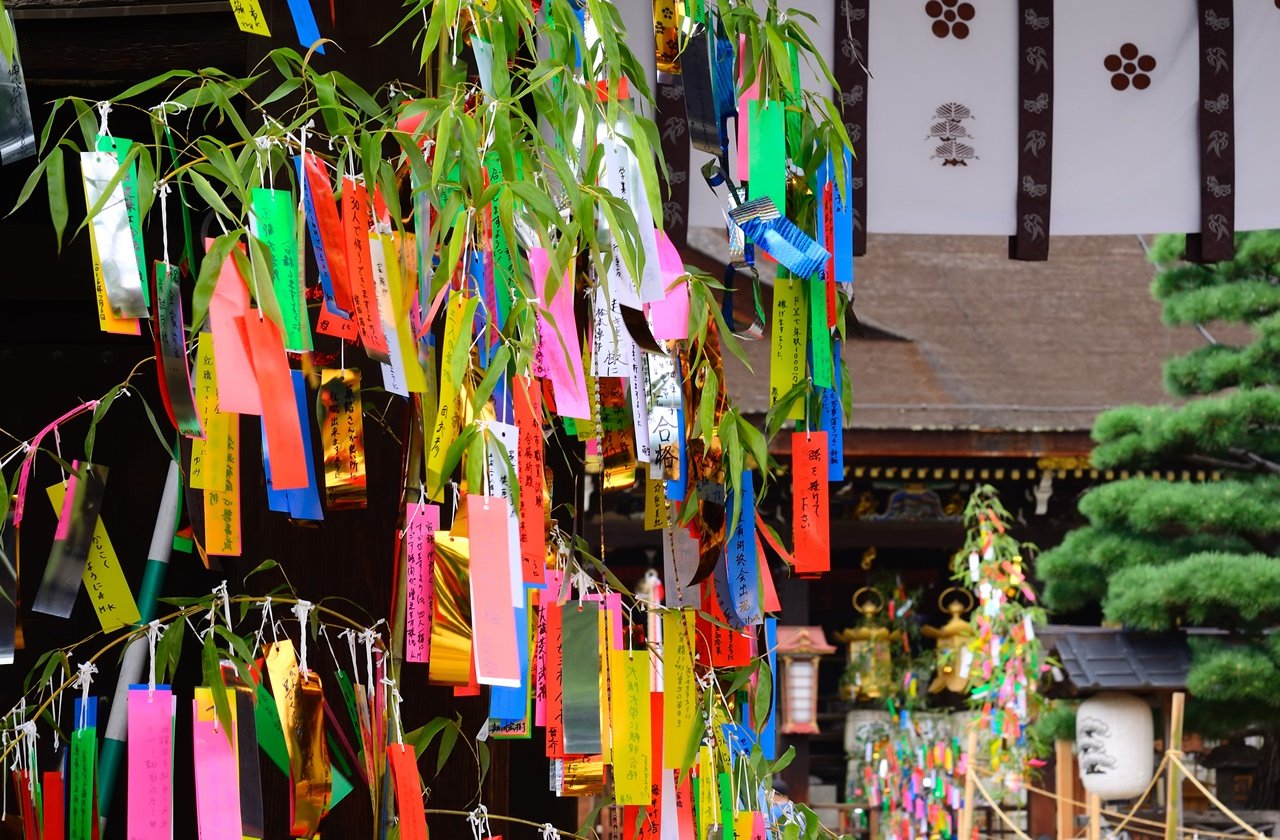
Photo by airpebble on Adobe Stock
August is the best time to visit Tohoku in Japan, as it is the month where the region celebrates three of its grandest festivals. Elsewhere, there are plenty of fireworks festivals you can attend.
15. Sendai Tanabata Festival
Date: August 6 to 8
Location: Sendai, Miyagi
The Tanabata Festival originates from the Chinese Qixi Festival and celebrates the much-awaited meeting of two deities, represented by the stars Vega and Altair. While there are various celebrations of the Tanabata Festival, Sendai is known in Japan for their festivities. Find thousands of colorful streamers and paper decors all over the city. These decorations all have different meanings depending on a person’s wishes. There are also parades and live performances, ending with a beautiful fireworks display.
16. Aomori Nebuta Festival
Date: Early August
Location: Aomori City, Aomori
The Aomori Nebuta Matsuri is one of the most colorful and joyful events in the Tohoku Region. A nebuta is a giant lantern float made of wireframes with LED lights, carried around town. Witness the parade and see the nebuta accompanied by taiko drums and energetic chants of the dancers. This is also one of the festivals that allows you to participate in the parade as long as you wear the proper clothing. Because of its impact throughout the years, it earned its designation as an Important Intangible Folk Cultural Properties in 1980. As this is one of the most popular festivals in Japan, it’s best to book your accommodation ahead of time.
September
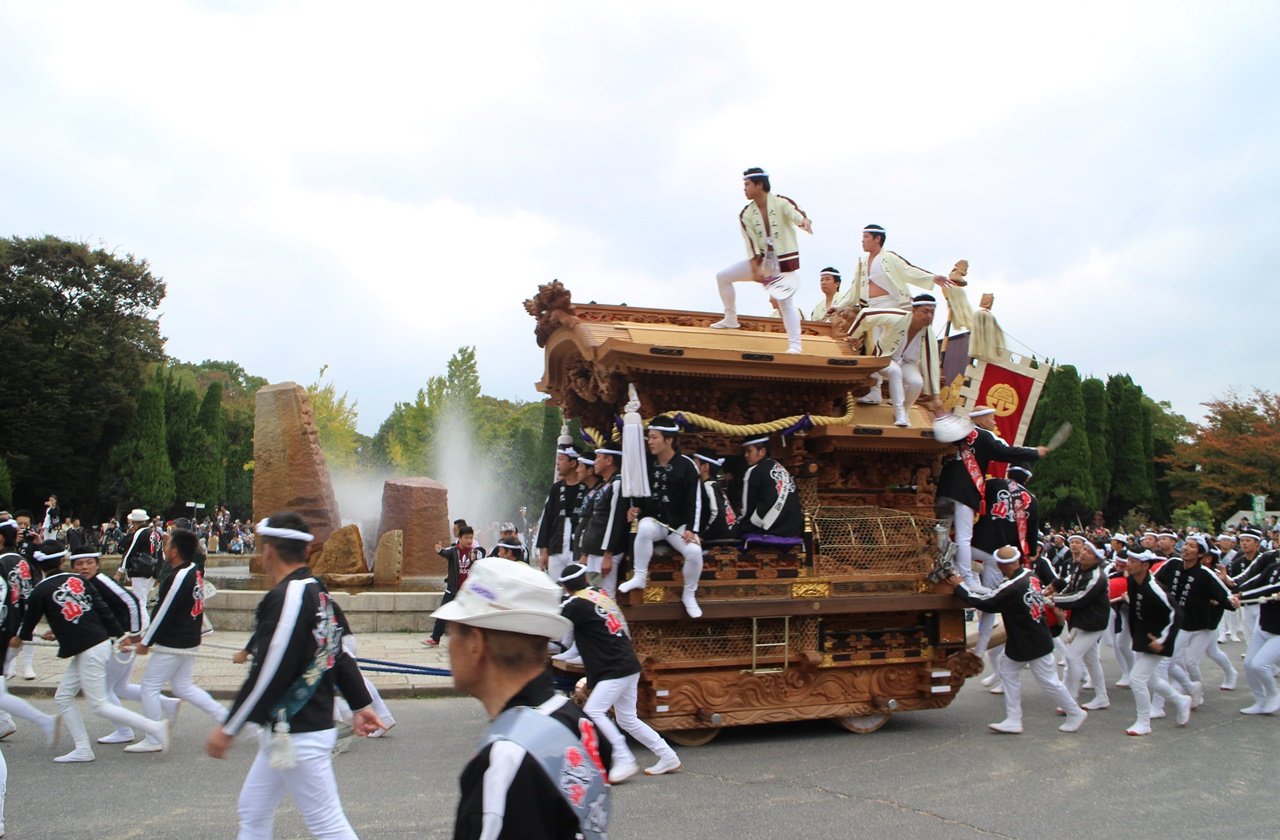
Photo by Lindsay Bernsten on Flickr
During the autumn months, there are plenty of festivals you can attend in Japan. There are harvest moon viewing festivals, autumn festivals, and even more modern music festivals.
17. Kishiwada Danjiri Festival
Date: Every third weekend of September
Location: Kishiwada City, Osaka
At the Kishiwada Danjiri Matsuri, large wooden carts (danjiri) take center stage as they race around the streets of Kishiwada. The festival began in 1703 when a Kishiwada feudal lord prayed to the Shinto gods for an abundant harvest. As exciting as seeing heavy wooden carts race around sounds, it’s somewhat dangerous and spectators are always advised to remain vigilant to avoid being hit by the danjiri. If you’re up for a thrilling festival experience, head to Osaka for the Kishiwada Danjiri Festival!
18. Ultra Japan
Date: Dates vary per year
Location: Tokyo
Aside from the Fuji Rock Festival and Summer Sonic Festival, Ultra Japan is one of the highly anticipated music festivals in the country. In addition, it is also one of the newer festivals, with its debut back in 2014. The festival features world-renowned EDM (Electronic Dance Music) artists like Tiesto, Alesso, Steve Aoki, Skrillex, and more.
October
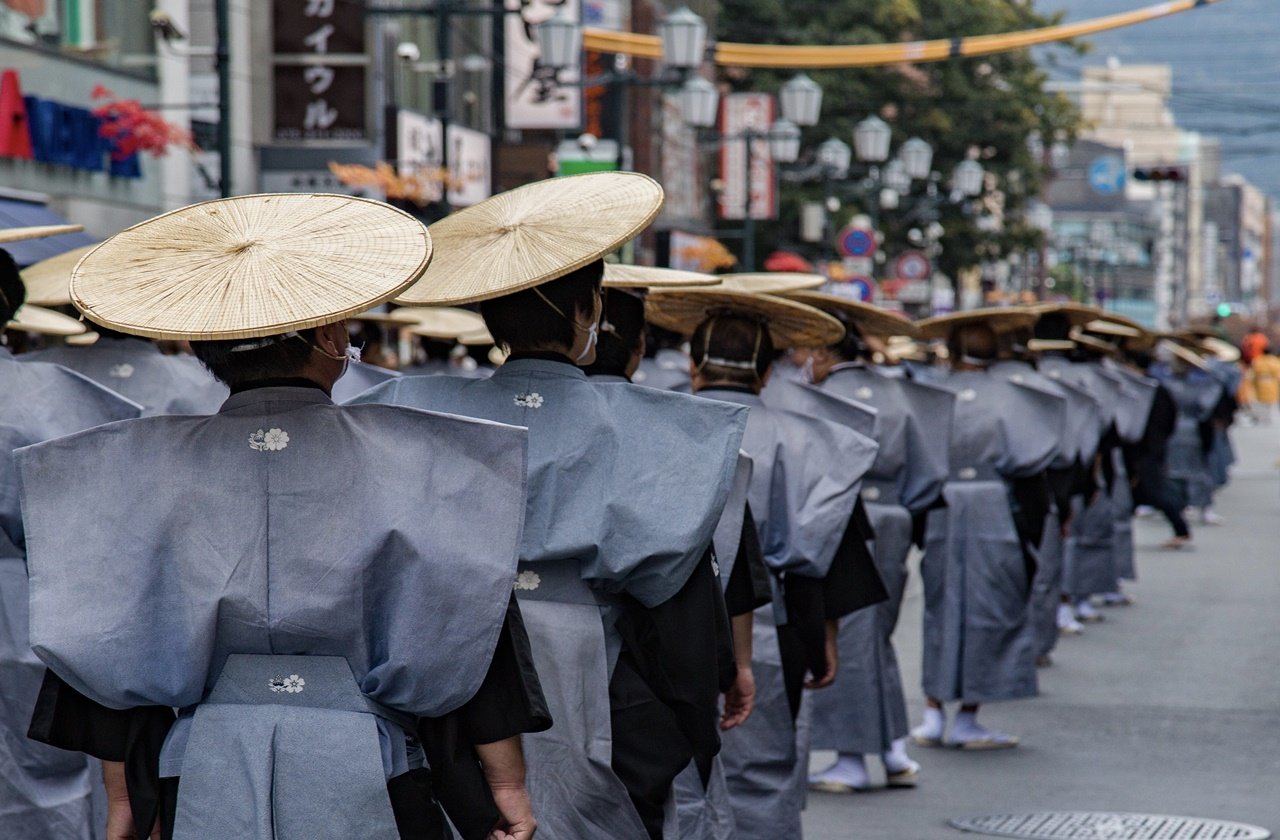
Photo by Andrew on Adobe Stock
October in Japan boasts the country’s most relaxing weather and colorful sceneries and is also the middle of the harvest season. Despite the rise of Western-influenced holidays like Halloween, there are also traditional festivals one should take note of.
19. Jidai Festival
Date: October 22
Location: Kyoto City, Kyoto
Witness Kyoto’s history in motion at the Jidai Festival, celebrating its founding. While it was established during the 1800s, it quickly rose to become one of Kyoto’s three main festivals, along with the Gion and Aoi Festival. Jidai Matsuri festivities begin in the morning when the mikoshi is brought out of the Imperial Palace and is paraded around the city. Thousands of performers dressed as samurai, historical figures, and other people from different eras accompany the mikoshi until it arrives at the Heian Shrine, where the procession ends.
20. Nagasaki Kunchi Festival
Date: October 7 to 9
Location: Suwa Shrine, Nagasaki
The Kunchi Matsuri is perhaps the most popular festival in Nagasaki. It started out as a celebration of the bountiful harvest in autumn and eventually became a shrine festival after the founding of Suwa Shrine. The festival takes inspiration from Dutch, Portuguese, and Chinese influences, as they all influenced the city’s history. Watch the Dragon Dance performed by the Chinese residents and watch out for the European-inspired festival floats.
November
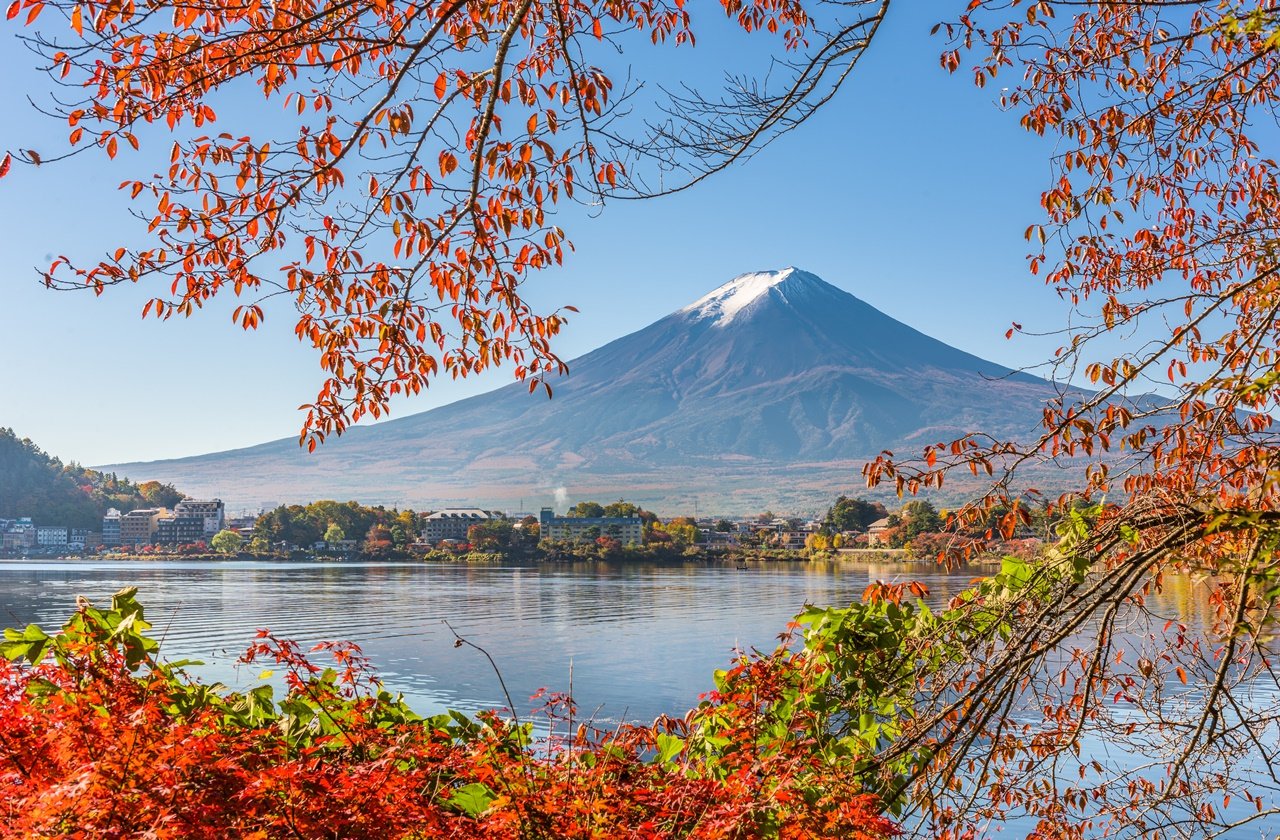
Photo by SeanPavonePhoto on Adobe Stock
November in in the country boasts picturesque lakes and mountains, all highlighted by the bright hues of fall foliage. As such, some of the festivals in Japan feature the beauty of autumn.
21. Shichi-Go-San Festival
Date: November 15
Location: Nationwide
The Shichi-Go-San (7-5-3) Matsuri celebrates the growth of three and five-year-old boys and three and seven-year-old girls. In a way, this can also be considered as a rite of passage. The ages three, five, and seven are considered lucky according to East Asian numerology. During the Shichi-Go-San festival, the children, dressed in traditional or Western clothing, visit shrines to pray for their future. They also take commemorative photos and send them to their relatives.
22. Kawaguchi Lake Autumn Festival
Date: Dates vary per year
Location: Lake Kawaguchi, Fujikawaguchiko
The Kawaguchi Lake Autumn Festival highlights the beauty of autumn and the infamous Mt. Fuji. During the festival, locals gather and head to various festival spots and admire the view of Mt. Fuji bordered by striking red hues of the foliage. There are many viewing spots around town, so you’re sure to have more than one Instagrammable photo! Once you’ve finished admiring and taking photos of the gorgeous scenery, stop by one of the stalls and munch on the best local treats.
December
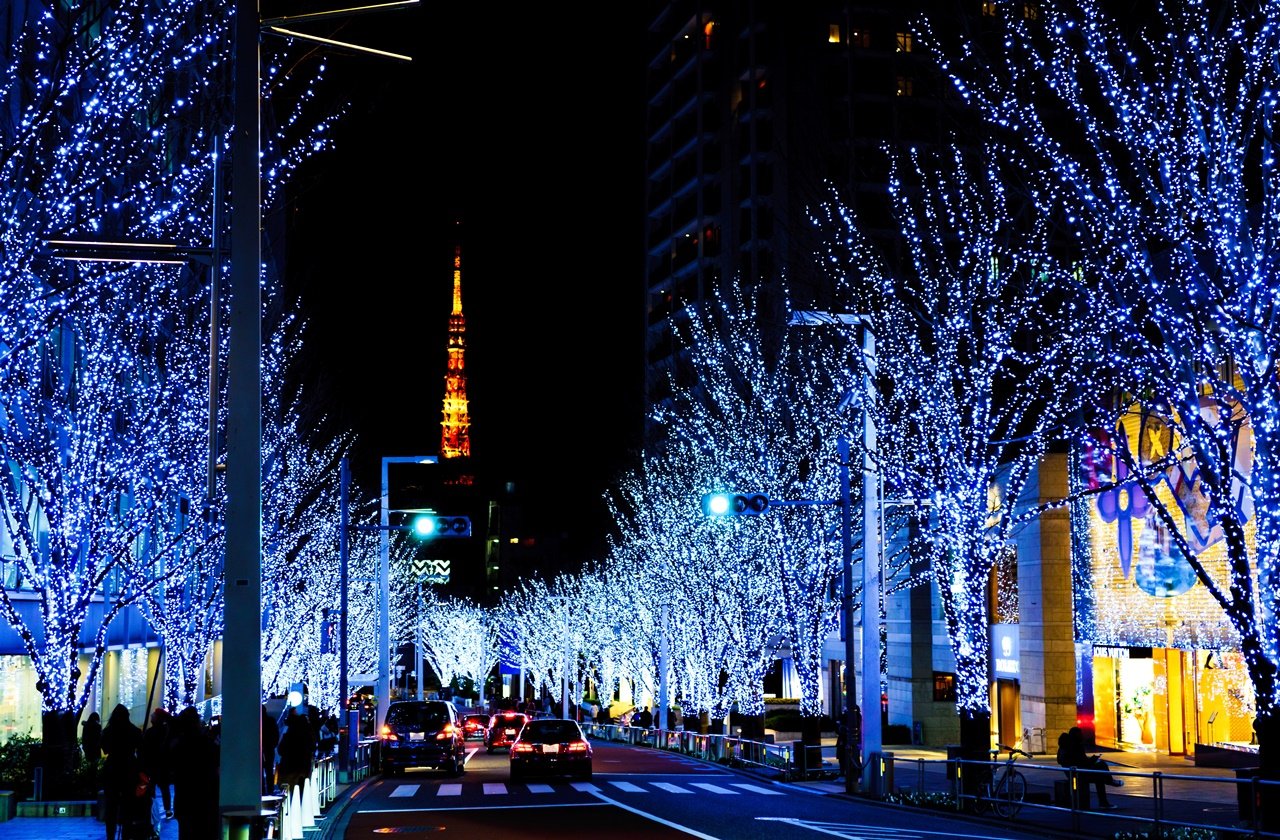
Photo by show999 on Adobe Stock
In the last month of the year, year-end parties and winter festivals dominate the country. Commercial areas like malls, town squares, and city streets come to life with festive decorations as well. In terms of festivals, both traditional and modern festivals are held, giving you the best of both worlds.
23. Chichibu Night Festival
Date: December 2 to 3
Location: Chichibu Shrine, Saitama
The Chichibu Night Festival (also known as Chichibu Yomatsuri) is the main festival of the Chichibu Shrine in Saitama. Held from December 2 to 3, the festival is one of the best festivals in Japan to highlight floats. With beautiful decorations like lanterns, tapestries, and wood carvings, the floats go around the city accompanied by lively music and dances. After the parade, the city lights up as colorful fireworks take the spotlight, viewable from different places in town. The festival is also one of the rare events where you can watch the fireworks during winter.
24. Luminarie
Date: Dates vary per year
Location: Kobe, Hyōgo
Kobe’s Luminarie is a unique light festival that commemorates the victims of the Great Hanshin Earthquake in 1995. Initially held to help lift people’s spirits and raise money for aid, it became popular and is now an annual event. Additionally, during the tragic 2011 Tohoku earthquake and tsunami, a special exhibition in the festival was held to help raise money for the victims. At the festival, the city transforms into a picturesque winter wonderland, with almost 200,000 hand-painted lights on display. The city roads are closed, making way for people to walk freely and admire the bright festival of lights.
Discover Japan’s Rich Heritage Through Its Festivals
As one of the most culturally-rich countries, it’s no wonder that Japan has some of the best well-preserved festivals. One can also note the balance of traditional beliefs and modern customs, as seen in centuries-old festivals and those influenced by the West. Every season, there are a number of festivals in Japan, with every region adding in their own twist to make these events more local and personalized.
Now that you’ve had a glimpse of Japan’s must-visit festivals, this is your chance to plan for the perfect getaway in the country! Aside from visiting popular tourist sites, why not attend some of the popular festivals and immerse yourself in the local culture?


